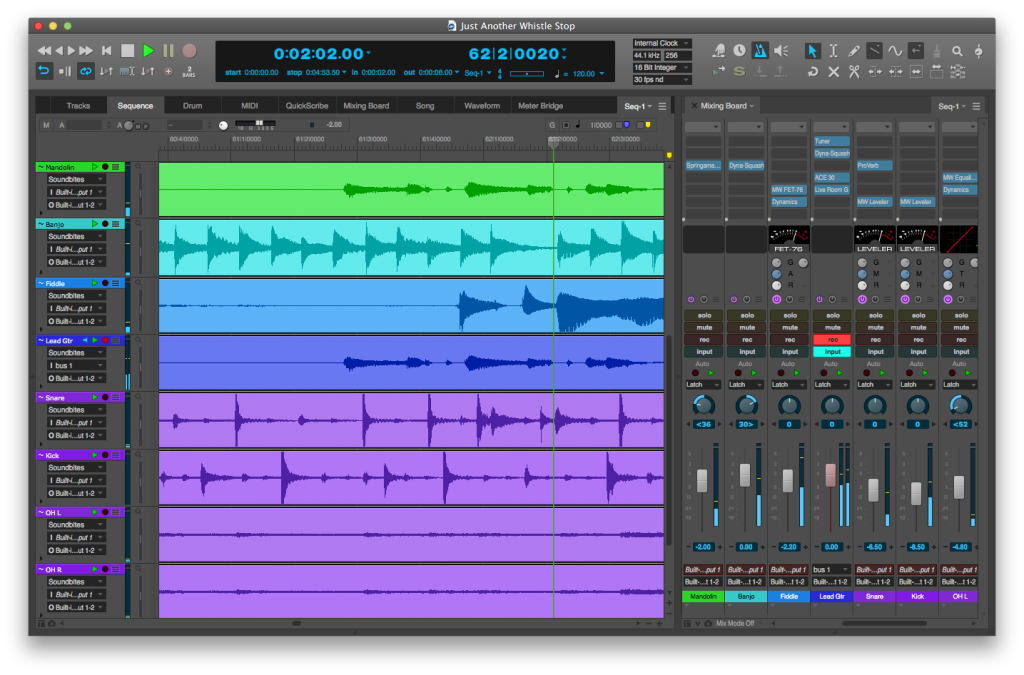MOTU Releases Digital Performer 9
MOTU’s flagship DAW is now on version 9. Digital Performer 9 brings us new plug-ins, a hybrid-style synthesizer, and lots of workflow enhancements – user requested, of course.
The MX4 MultiSynth combines five types of synthesis – subtractive, wavetable, FM, AM, and ‘analog emulation’. Additional plug-ins focus mostly on the tone, with an 1176 limiter emulator, MultiFuzz™ distortion from the 70s, MicroG™ and MicroB™ polyphonic octave generators for guitars and bass. Lastly, we have the MegaSynth™ that allows users to basically turn their guitar into a synthesizer.
The full version of MOTU Digital Performer 9 is available now for $499 MSRP. Competitive and AudioDesk upgrades are available as well for $395 MSRP, and an upgrade from the previous version will go for $195 MSRP.
Here are more details from MOTU, including workflow enhancements:
Spark your creativity, then refine your mix — all in a singular workflow. Digital Performer 9 delivers inspirational features devised to ignite your creative muse, combined with state-of-the-art studio production technologies engineered for the most demanding, world-class recording and production environments.
Productivity Enhancements
- Automation lanes in the Sequence Editor — Display audio and MIDI automation data (volume, pan, plug-in settings, etc.) in separate lanes below each track for easier viewing and editing. Show and hide as many lanes as you wish.
- Spectrogram display in the Sequence Editor — View the spectral content of each audio track, side by side with their waveforms, directly in the Sequence Editor timeline with a colorful, informative visual representation of the frequency content of your audio material.
- Retina display support — View DP’s carefully crafted UI themes like Carbon Fiber, Producer and the all-new DP9 theme in stunning detail on the exceptionally high image resolution of your Mac’s Retina display.
- MusicXML export — Export your DP QuickScribe notation scores as a MusicXML file, which can then be imported into popular music notation applications like Finale™ and Sibelius™. QuickScribe’s renowned notation transcription, along with dynamics and many other musical symbols, are preserved during the file transfer.
- Create Tracks command — Add many tracks to your project in one step, even different types of tracks (MIDI, audio, aux, master faders, etc.) all at once.
- Floating plug-in windows — Keep plug-in windows in front of all other DP windows. Set the floating preference globally or choose to float on a per-window basis.
- MIDI Learn for audio plug-ins — Map knobs, faders and switches on your MIDI controller to audio plug-in parameters. Use Digital Performer’s powerful Custom Consoles feature to access advanced programming for the connection.
- Mute MIDI Notes — Use the Mute Tool to temporarily silence both audio regions and MIDI notes, including multiple selected notes.
- Project Notes — Save text notes in your DP project, rather than a separate text document. Log production info, keep a To Do list, build up liner notes.
- More searching — Find Markers, Chunks and plug-in preferences faster with newly added search fields.
Please note: When you buy products through links on this page, we may earn an affiliate commission.







